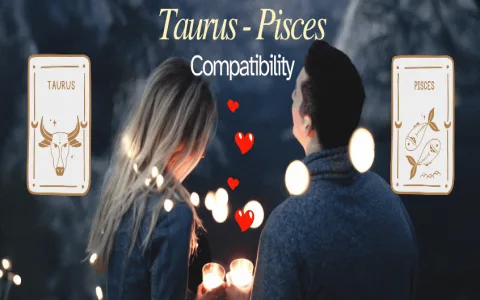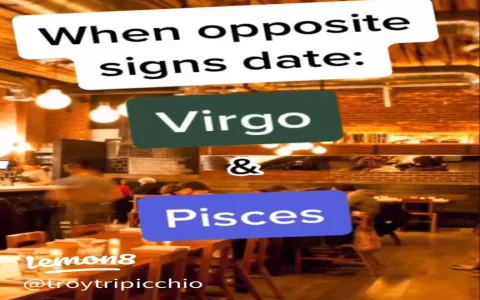Man, I wasn’t looking to become a relationship guru, trust me. I started this whole documentation process because I was drowning. My situation—let’s just say it involved a Virgo woman (me, naturally) and a Pisces man—was a recurring disaster movie, and I needed to figure out if we were inherently broken or just badly tuned. I wasn’t looking for textbook answers; I was building a field manual.
I committed to this project after one massive fight about a utility bill being two months late. I remember sitting there, staring at the calendar, and realizing I had to document every single point of friction just to survive. This isn’t astrology chat; this is my messy, real-life log.
Catching the Vibe (The Initial Observation)
I started by simply tracking our arguments for three months. I kept a little notebook, just jotting down the topic and the emotional outcome. What I quickly identified was that our foundational goals were always in conflict. I, the Virgo, always needed to process, analyze, and systematize. He, the Pisces, needed to flow, feel, and dream. We weren’t speaking different languages; we were using different operating systems.
I observed how my critical, detail-oriented approach completely shut him down. I’d bring up a problem—like, “The shelf needs securing before it falls”—and he’d hear, “You are fundamentally inadequate and messy.” Conversely, I tracked how his constant emotional unavailability, his tendency to disappear into his head when things got tough, made me feel completely unmoored and unsafe. It was always a cycle: my anxiety triggering his withdrawal, his withdrawal increasing my need to criticize and organize.
I had to admit that the core challenge wasn’t a lack of love; it was a lack of structural understanding. We were pulling in opposite directions: one aiming for shore (me) and the other happily drifting out to sea (him).
Documenting the Mess (The Challenges)
My documentation showed clear patterns. I labeled five main friction points that came up constantly:
- The Reality vs. Fantasy Clash: He’d promise something grand—a future plan, a trip, a commitment—but I demanded the spreadsheet and the budget. He’d feel crushed; I’d feel lied to.
- The Critical Tone: I used logic as a weapon. If he messed up a simple chore, I’d detail why he failed. He reacted by becoming foggy and elusive, punishing me with silence.
- Money and Organization: This was a nightmare. I implemented joint accounts, and he’d use them for esoteric art supplies without telling me. My need for financial security collided with his belief that money is just something that appears when you need it. I totally freaked out multiple times.
- Emotional Boundaries: He absorbed everyone’s problems—friends, strangers, even characters in movies. I needed him to separate himself and focus on our specific issues. He couldn’t. His empathy was overwhelming.
- The Need for Space: When I needed resolution, he retreated. I saw it as abandonment. He saw it as surviving the intensity of my analysis.
I realized I couldn’t change him, and trying to force the Piscean ocean into the Virgoan tidy bucket was never going to work. The practice shifted from documenting conflict to documenting strategies for mutual survival.
Running the Experiments (Finding Harmony)
I decided I had to stop leading with logic and start leading with methodology. I implemented five experimental rules for myself, which became the blueprint for finding harmony. This wasn’t about fixing him; it was about adjusting my own highly ingrained Virgo systems to accommodate the flow. This stuff actually worked, and I’ve seen it work for others I’ve shared it with.
Five Ways to Find Harmony:
- 1. Stop Trying to Tidy the Dream: I learned to let him have his fantasies. When he started talking about quitting our jobs and opening a sustainable farm in Bali, I practiced responding with, “That sounds beautiful. Tell me more about the feeling of that life,” instead of, “How will we afford the permits?” I separated the dream conversation from the planning conversation.
- 2. Use Compassion as a Pre-Fix: Before I delivered any critique or organizational note, I had to start with an acknowledgment of his effort or his feeling. Instead of, “You left dirty dishes,” I shifted to, “I know you were stressed today, and I appreciate you cooking, but I need the sink clear before morning.” It’s basic stuff, but it bypasses his sensitivity.
- 3. Define and Enforce Concrete Roles: Since he struggles with abstract accountability, I assigned him duties that leveraged his natural inclination. He’s terrible with bills but amazing at creating atmospheric, sensory experiences. He took over managing our weekend quality time, and I owned 100% of the budget and the calendar. No sharing needed—just defined separation of duties.
- 4. Schedule the Escape Hatch: I introduced a “mandatory alone time” rule for both of us. He gets his time to drift, and I get my time to organize without feeling guilty or neglected. We communicated this schedule upfront so his withdrawal didn’t feel like a personal rejection to me.
- 5. Focus on the Shared Creative Current: We discovered we bond best when we are creating something together—it doesn’t matter what. Building a piece of furniture, painting a room, planning a garden. It satisfies my need for tangible results and his need for fluid expression. I made sure we prioritize this kind of collaboration weekly.
The biggest takeaway from this entire documentation process? You can’t organize water. But you can build a beautiful vessel that holds the water perfectly. The friction doesn’t disappear, but when you stop trying to fix your partner and start adjusting the framework you operate within, it becomes manageable, and surprisingly, harmonious.








